Probability Definition:
| Read About: Sample Space and Event in Probability |
If a random experiment has n possible outcomes, which are equally likely, mutually exclusive, and totally exhaustive and m of these are favorable to an event A, then the probability of the event A is defined as the ratio m : n. Symbolically, P(A) = m/n.
Thus, the probability of the event A = (number of outcomes favorable to the event A) / (total number of equally likely, mutually exclusive, and totally exhaustive outcomes of the experiment)
⇒ probability of the event A = n(A) / n(S)
The probability of a sure event is 1 and the probability of an impossible event is 0.
| Also, 0 ≤ P(A) ≤ 1 ⇒ P(Ā) + P(A) = 1 ⇒ P(Ā) + = 1 – P(A) |
Probability Examples:
| Example 1: A die is thrown. Find the probability of getting- (i) a Prime Number (ii) 2 or 4 (iii) a Multiple of 2 or 3 (iv) a number greater than 2 (v) an even prime. Solution: Let ‘S’ be the sample space of throwing a die. S = { 1, 2, 3, 4, 5, 6 } ⇒ n(S) = 6 (i) Let A be the event of getting a prime number. A = { 2, 3, 5 } ⇒ n(A) = 3 ∴ P(A) = n(A) / n(S) ⇒ P(A) = 3/6 = 1/2 (ii) Let B be the event of getting 2 or 4. B = { 2, 4 } ⇒ n(B) = 2 ∴ P(B) = n(B) / n(S) ⇒ P(B) = 2/6 = 1/3 (iii) Let C be the event of getting a multiple of 2 or 3. C = { 2, 4, 6, 3 } ⇒ n(C) = 4 ∴ P(C) = n(C) / n(S) ⇒ P(C) = 4/6 = 2/3 (iv) Let D be the event of getting a number greater than 2. D = { 3, 4, 5, 6 } ⇒ n(D) = 4 ∴ P(D) = n(D) / n(S) ⇒ P(D) = 4/6 = 2/3 (v) Let E be the event of getting an even prime. E = { 2 } ⇒ n(E) = 1 ∴ P(E) = n(E) / n(S) ⇒ P(B) = 1/6 |
| Example 2: In a single throw of two dies find the probability of getting- (i) a total of 9 (ii) a total of 11 (iii) 6 as a product (iv) a total of 8 or 10 (v) a doublet (vi) a sum greater than 9 (vii) neither 9 nor 11 as the sum of the numbers on the faces (viii) a number greater than four on each die (ix) neither a doublet nor a total of six will appear. Solution- Let S be the sample space of throwing two dies.  n(S) = 36 (i) Let A be the event of getting a total of 9. A = { (3, 6) (4, 5) (5, 4) (6, 3) } ⇒ n(A) = 4 ∴ P(A) = n(A) / n(S) ⇒ P(A) = 4/36 = 1/9 (ii) Let B be the event of getting a total of 11. B = { (5, 6) (6, 5) } ⇒ n(B) = 2 ∴ P(B) = n(B) / n(S) ⇒ P(B) = 2/36 = 1/18 (iii) Let C be the event of getting 6 as a product. C = { (1, 6) (2, 3) (3, 2) (6, 1) } ⇒ n(C) = 4 ∴ P(C) = n(C) / n(S) ⇒ P(C) = 4/36 = 1/9 (iv) Let D be the event of getting a total of 8 or 10. D = { (2, 6) (3, 5) (4, 4) (5, 3) (6, 2) (4, 6) (5, 5) (6, 4) } ⇒ n(D) = 8 ∴ P(D) = n(D) / n(S) ⇒ P(D) = 8/36 = 2/9 (v) Let E be the event of getting a doublet. E = { (1, 1) (2, 2) (3, 3) (4, 4) (5, 5) (6, 6) } ⇒ n(E) = 6 ∴ P(E) = n(E) / n(S) ⇒ P(B) = 6/36 = 1/6 (vi) Let A be the event of getting a sum greater than 9 i.e. 10, 11, and 12. A = { (4, 6) (5, 5) (6, 4) (5, 6) (6, 5) (6, 6) } ⇒ n(A) = 6 ∴ P(A) = n(A) / n(S) ⇒ P(A) = 6/36 = 1/6 (vii) Let A be the event of getting a total of either 9 or 11. A = { (3, 6) (4, 5) (5, 4) (6, 3) (5, 6) (6, 5) } ⇒ n(A) = 6 ∴ P(A) = n(A) / n(S) ⇒ P(A) = 6/36 = 1/6 ∴ P(neither 9 nor 11 as sum) = 1 – P(either 9 or 11 as sum) ⇒ P(neither 9 nor 11 as sum) = 1 – P(A) ⇒ P(neither 9 nor 11 as sum) = 1 – 1/6 = 5/6 (viii) Let A be the event of getting a number greater than 4 on each die. A = { (5, 5) (5, 6) (6, 5) (6, 6) } ⇒ n(A) = 4 ∴ P(A) = n(A) / n(S) ⇒ P(A) = 4/36 = 1/9 (ix) Let A be the event of getting either a doublet or a total of six. A = { (1, 1) (2, 2) (3, 3) (4, 4) (5, 5) (6, 6) (1, 5) (2, 4) (4, 2) (5, 1) } ⇒ n(A) = 10 ∴ P(A) = n(A) / n(S) ⇒ P(A) = 10/36 = 5/18 ∴ P(neither a doublet nor a total of 6) = 1 – P(either a doublet or a total of 6) ⇒ P(neither a doublet nor a total of 6) = 1 – P(A) ⇒ P(neither a doublet nor a total of 6) = 1 – 5/18 = 13/18 |
| Example 3: A coin is tossed three times. Find the probability of- (i) no head (ii) exactly one head (iii) at least one head (iv) at most one head (v) at least two heads. Solution- Let S be the sample space of tossing of a coin three times. ∴ S = { HHH, HHT, HTH, THH, HTT, THT, TTH, TTT } ⇒ n(S) = 8 (i) Let A be the event of getting no head. A = { TTT } ⇒ n(A) = 1 ∴ P(A) = n(A) / n(S) ⇒ P(A) = 1/8 (ii) Let A be the event of getting exactly one head. A = { HTT, THT, TTH } ⇒ n(A) = 3 ∴ P(A) = n(A) / n(S) ⇒ P(A) = 3/8 (iii) Let A be the event of getting at least one head. A = { HTT, THT, TTH, HHT, HTH, THH, HHH } ⇒ n(A) = 7 ∴ P(A) = n(A) / n(S) ⇒ P(A) = 7/8 OR P(at least one head) = 1 – P(no head) ⇒ P(at least one head) = 1 – 1/8 = 7/8 (iv) Let A be the event of getting at most one head. A = { HTT, THT, TTH, TTT } ⇒ n(A) = 4 ∴ P(A) = n(A) / n(S) ⇒ P(A) = 4/8 = 1/2 (v) Let A be the event of getting at least two heads. A = { HHT, HTH, THH, HHH } ⇒ n(A) = 4 ∴ P(A) = n(A) / n(S) ⇒ P(A) = 4/8 = 1/2 |
| Example 4: What is the probability that a non-leap year selected at random has 53 Sundays? Solution- In a non-leap year there are 365 days in which there are 52 weeks and 1 day. In 52 weeks there are 52 Sundays. Now 1 day can be any of the seven days. Let S be the sample space associated with the one day i.e.- S = { Sunday, Monday, Tuesday, Wednesday, Thursday, Friday, Saturday } Out of 7 outcomes, only 1 is favorable i.e. Sunday. ∴ P(53 Sundays) = 1/7 |
| Example 5: What is the probability that a leap year selected at random has 53 Sundays? Solution- In a leap year there are 366 days in which there are 52 weeks and 2 days. In 52 weeks there are 52 Sundays. Now the remaining 2 days can be any of the following days. Let S be the sample space associated with these two remaining days i.e.- S = { (Sunday, Monday), (Monday, Tuesday), (Tuesday, Wednesday), (Wednesday, Thursday), (Thursday, Friday), (Friday, Saturday), (Saturday, Sunday) } Let A be the event of 53 Sundays. A = { (Sunday, Monday), (Saturday, Sunday) } n(A) = 2 ∴ P(A) = 2/7 |
| Example 6: Three dice are thrown together. Find the probability of getting a total of at least 6. Solution- Let ‘S’ be the sample space of throwing three dice. ∴ n(S) = 63 = 216 Let ‘A’ be the event of getting a total of less than 6. A = { (1, 1, 1) (1, 1, 2) (1, 2, 1) (2, 1, 1) (1, 1, 3) (1, 2, 2) (1, 3, 1) (2, 1, 2) (2, 2, 1) (3, 1, 1) } n(A) = 10 P(A) = n(A)/n(S) = 10/216 = 5/108 ∴ P(total of at least 6) = P(Ā) ⇒ P(total of at least 6) = 1 – P(A) ⇒ P(total of at least 6) = 1 – 5/108 = 103/108 |
| Example 7: What is the probability that the number selected at random from the numbers 1, 2, 3, ……, 25 is a prime number? Solution- 1 number out of 25 numbers can be selected in 25C1 ways. ∴ Total number of exhaustive cases = 25C1 = 25 Let ‘A’ be the event of getting a prime number. ∴ A = { 2, 3, 5, 7, 11, 13, 17, 19, 23 } Out of these 9 prime numbers, one prime number can be selected in 9C1 ways. ∴ Total number of favorable cases = 9C1 = 9 ∴ P(A) = number of favorable cases/number of exhaustive cases ⇒ P(A) = 9/25 |
| Example 8: A ticket is drawn from 25 tickets numbered from 1, 2, 3,……, 25. Find the probability that the ticket drawn is a multiple of 3 or 7. Solution- 1 ticket out of 25 tickets can be selected in 25C1 ways. ∴ Total number of exhaustive cases = 25C1 = 25 Let ‘A’ be the event of getting a ticket which is a multiple of 3 or 7. ∴ A = { 3, 6, 9, 12, 15, 18, 21, 24, 7, 14 } Out of these 10 tickets, one ticket can be drawn in 10C1 ways. ∴ Total number of favorable cases = 10C1 = 10 ∴ P(A) = number of favorable cases/number of exhaustive cases ⇒ P(A) = 10/25 = 2/5 |

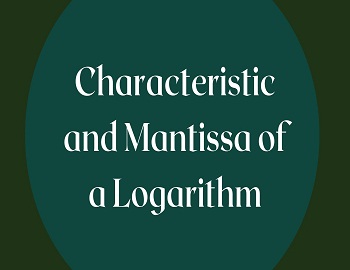
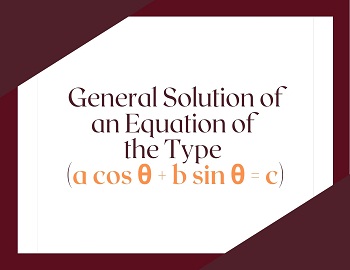

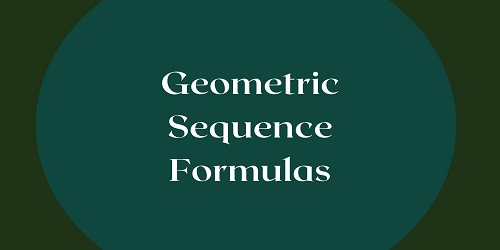
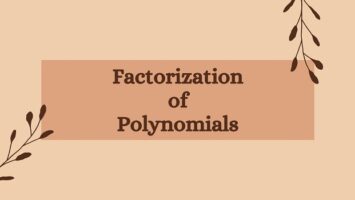
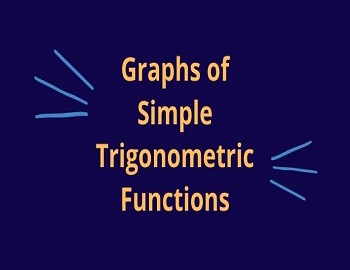


Comments (No)